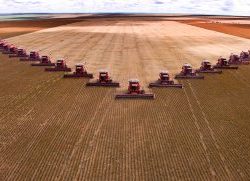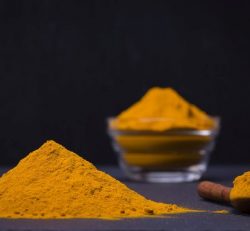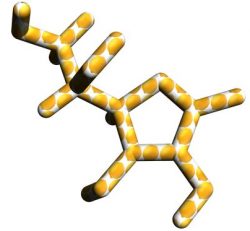WHY A GOOD PIG FARM CAN’T DO WITHOUT TECHNOLOGY
Labour shortage is one of the major problems in modern-day swine production. Yet, switching to technology to save manpower seems a giant step to take, says swine feed technology expert Dr Casey Bradley. She has at least 3 good reasons to consider more technological applications.
My professional transition at DSM has been quite busy. I have been actively planning a commercial sow research programme in North America. During the investigation process, I have discussed my ideas with several people within my academic and industry network.
On the personal front, my badge-carrying hero of a husband has been laid up again with another repair, this time on his Achilles heel. It is quite entertaining listening to him get angry at the news channels and the contradicting stories they market daily. I truly think we get along so well because he within his job he is routinely called a ‘pig’ and I endear all pigs.

Smartphones can be applied in many ways these days – also in a swine farm. An increasing number of companies is developing smart solutions for use in pig production. Photo: Shutterstock
Number 1 problem in swine production
But back to the real pigs… during many of the discussions with producers, the number 1 problem they are facing is a labour shortage, let alone highly trained labour access. During the discussions of research, I have had to explain the type of feed technologies we would need to use to accurately weigh and blend different diets for both gestating and lactating sows.
As a nutritionist, I understand the potential benefits of this type of equipment for any production system and not just research. However, technology scares producers and following suit to my last column, ‘sticker shock’ is the bigger issue. Many of them run the economics and cannot justify the extra million-dollar price tag.
Technology can save manpower in barns
I am perplexed by the contradictions of a labour shortage being the number 1 problem our industry faces and not considering a technology that will save or extend manpower within a system. Thus, if you are considering some new technologies for your systems, I thought I would share with you some of my perceived insights or benefits:
Ability to hire a different type of employee
What can’t Generation Z live without, technology. This new generation understands technology and they know how to use these tools to be more efficient and successful. Furthermore, you can utilise the people who are good at animal husbandry for the animal work and the ‘techie’ personalities to keep your equipment performing.
Targeted animal focus
This type of technology allows you to find at risk sows quicker and easier, while the other 80-95% take care of themselves. Additionally, there is plenty of research available suggesting that sows have different nutritional requirements based on numerous factors. Feed blending technology would allow you to tailor the sow to her individual needs, while hopefully enhancing her productivity and/or efficiency.
Clear transparency
These technologies provide data to help you make better decisions, from understanding why you are truly culling animals, to running your own internal research trials, to further minimising human error. No more guessing if Sow 1000 ate or not yesterday, but you will know this before you’ve even finished your morning cup of coffee. Not to mention today’s consumers want transparency and technology can assist in our transparency.
Clear ROI for swine farms
To summarise, a good estimate of an employee cost in the USA is around $ 50-75,000 annually for a production system. In a normal depreciation plan, equipment is depreciated over 10 years.
Within a 5,000-sow system, the added equipment is approximately $ 20/sow/year. If you can run the unit with one less employee and potentially produce one more pig per sow per year, the ROI (Return on Investment) is there. This time I do not need an economic model that only a mathematician understands, but it’s a strong business case to me to consider adding technology to your units.
Casey Bradley
Swine nutrition
Source: www.pigprogress.net












